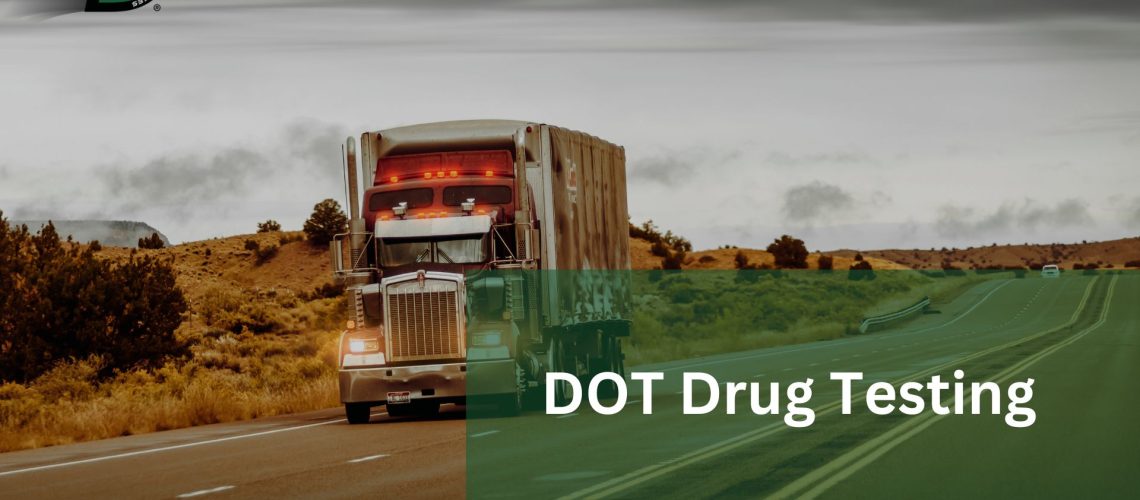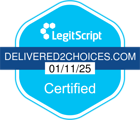Table of Contents
Toggle1. Introduction to DOT Drug Testing
The Department of Transportation (DOT) drug testing program is a federally mandated initiative to ensure the safety and reliability of the nation’s transportation systems. By requiring drug and alcohol testing for safety-sensitive positions, the DOT promotes a drug-free workplace and reduces the risk of accidents caused by impaired employees.
Whether you’re an employer, a driver, or simply someone curious about the process, understanding DOT drug testing is essential to maintaining compliance and safety standards.
2. Why DOT Drug Testing Is Important
DOT drug testing is vital for ensuring public safety. Drivers and other safety-sensitive employees operate vehicles and equipment that, if misused, can endanger lives. Drug testing helps:
- Prevent accidents: Employees under the influence of drugs or alcohol are more likely to make errors.
- Ensure compliance: Employers, who are DOT-regulated, must follow strict federal rules.
- Promote a drug-free culture: Regular testing reinforces the importance of staying drug-free.
Focus Keywords: DOT drug testing importance, drug testing for drivers
3. Who Is Subject to DOT Drug Testing?
DOT drug testing applies to employees in safety-sensitive roles across various industries regulated by the Department of Transportation. These include:
- Commercial motor vehicle (CMV) drivers: Operators of vehicles weighing over 26,001 lbs or transporting hazardous materials.
- Airline personnel: Pilots, flight attendants, and maintenance staff.
- Railroad workers: Employees involved in train operation or safety maintenance.
- Transit workers: Bus drivers and light rail operators.
- Maritime employees: Crew members operating commercial vessels.
If you fall under these categories, you’re required to comply with DOT drug testing regulations.
4. Types of DOT Drug Tests
There are several types of DOT drug tests, each designed for specific scenarios:
- Pre-Employment Testing: Conducted before hiring an employee for a safety-sensitive position.
- Random Testing: Employees are randomly selected for unannounced testing to deter drug use. Usually unobserved.
- Post-Accident Testing: Required after specific types of accidents to determine if drugs or alcohol played a role.
- Reasonable Suspicion Testing: Conducted if a trained supervisor suspects drug or alcohol use based on observed behavior.
- Return-to-Duty Testing: Conducted after an employee completes the Substance Abuse Professional (SAP) process. Always observed.
- Follow-Up Testing: Conducted after an employee returns to safety-sensitive duties following a violation. Always observed.
Focus Keywords: types of DOT drug tests, return-to-duty drug testing
5. DOT Drug Testing Procedures: Step-by-Step Guide
Understanding the process ensures compliance and transparency. Here’s a step-by-step guide:
- Notification: Employees are informed of their selection for a drug test.
- Arrival at Collection Site: Employees must arrive promptly at a certified collection facility. Cannot leave until a usable specimen is collected.
- Specimen Collection: A urine sample is collected under controlled conditions.
- Chain of Custody: The sample is sealed and documented to prevent tampering.
- Laboratory Testing: Certified labs analyze the sample for prohibited substances.
- Medical Review Officer (MRO) Review: An MRO evaluates the results and contacts the employee if further clarification is needed (e.g., prescription medication).
- Results Reporting: The entity who orders the test receives the final negative or positive results, (i.e.; DER, SAP, C/TPA).
Focus Keywords: DOT drug testing procedures, drug test process
6. Common Substances Screened in DOT Drug Testing
DOT drug tests screen for the minimum five panels of substances:
- Marijuana (Need to be under 15 ng/mL)
- Cocaine
- Amphetamines (including methamphetamine)
- Opioids (including codeine, heroin, and synthetic opioids like oxycodone)
- Phencyclidine (PCP)
Testing ensures that employees are not impaired while performing safety-sensitive duties.
Focus Keywords: substances in DOT drug tests, drug screening
7. Rights and Responsibilities: Drivers vs. Employers
Drivers’ Rights:
- Receive notification before testing.
- Request a split-sample test if results are disputed.
- Ensure the confidentiality of their test results.
Employers’ Responsibilities:
- Implement a compliant drug and alcohol testing program.
- Provide employees with clear policies regarding drug testing.
- Maintain accurate records of all testing activities.
- Only the RTD test and the last of the follow-up tests are entered in the Clearinghouse.
Focus Keywords: DOT drug test rights, employer drug testing guide
8. Consequences of Failing a DOT Drug Test
Failing a DOT drug test can have serious implications:
- Immediate removal from safety-sensitive duties.
- Referral to a Substance Abuse Professional (SAP) for evaluation.
- Requirement to complete the return-to-duty process.
- Potential job loss, depending on the employer’s policies.
For drivers, failing a DOT drug test is reported to the Clearinghouse, which may impact future employment opportunities.
Focus Keywords: failing DOT drug test, return-to-duty process
9. DOT Drug Testing Compliance Tips for Employers
Employers can ensure compliance with these tips:
- Partner with Certified Labs: Work with labs certified by the Department of Health and Human Services (HHS).
- Train Supervisors: Provide training on identifying reasonable suspicion and handling testing procedures.
- Maintain Records: Keep detailed documentation of all testing activities in the employee’s HR file.
- Educate Employees: Regularly update employees on drug-testing policies and procedures.
- Audit Your Program: Periodically review your drug-testing program for compliance.
- Frequent the Learning Center: Clearinghouse offers a learning center with brochures and video instructions on most issues. https://clearinghouse.fmcsa.dot.gov/Learn
Focus Keywords: DOT compliance tips, employer drug testing guide
10. FAQs
Q1. What happens if I fail a DOT drug test?
Failing results in removal from safety-sensitive duties and requires completing the return-to-duty process.
Q2. How often are random drug tests conducted under DOT regulations?
Random tests must cover at least 50% of the workforce annually.
Q3. Are CBD products safe to use for DOT-regulated employees?
No. Even trace amounts of THC in CBD products can result in a positive drug test.
Q4. What is the return-to-duty process?
Employees must complete an evaluation by a Substance Abuse Professional (SAP) and comply with a follow-up testing plan.
Q5. Can I appeal a failed DOT drug test?
Yes, you can request a split-sample test for confirmation. You cannot give a new sample to override or replace the positive sample.
Focus Keywords: DOT drug test FAQs, return-to-duty process FAQs
Need help implementing the Follow-up testing Plan portion of the program?
DOT drug testing is essential for maintaining safety and compliance in transportation industries. By understanding the process, responsibilities, and consequences, both employers and employees can ensure a drug-free workplace.
Contact us today for expert guidance to ensure your business stays compliant!





